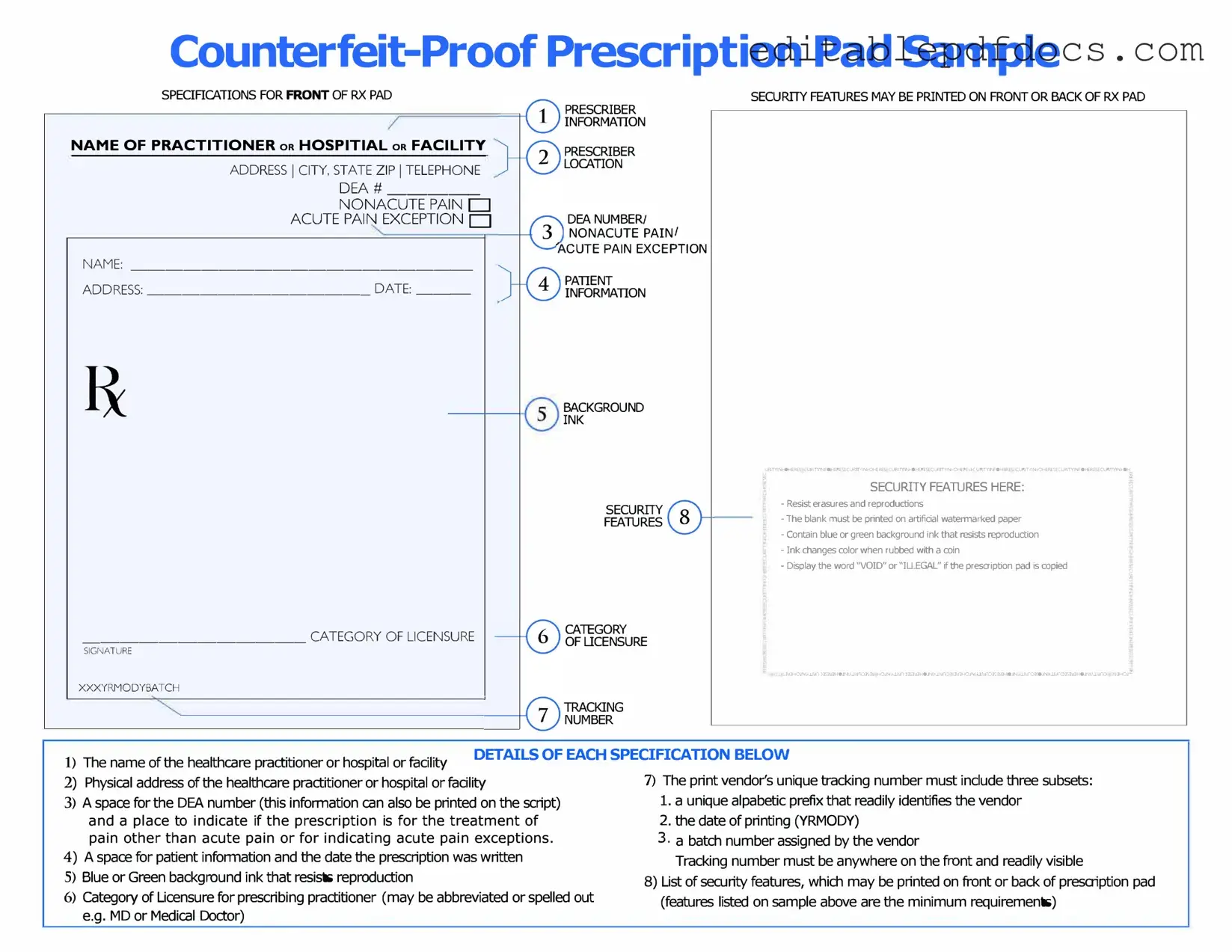Filling out a Prescription Pad form is a crucial task that requires attention to detail. Mistakes can lead to confusion, delays, and even serious health risks for patients. One common error occurs when the prescriber fails to include the patient's full name. Omitting this vital information can result in the wrong individual receiving medication, which can have dire consequences.
Another frequent mistake is neglecting to specify the dosage of the medication. Prescribers may assume that the pharmacy will know the appropriate amount, but this can lead to misunderstandings. Clear dosage instructions are essential to ensure that patients take their medications safely and effectively.
Inaccurate or incomplete medication names can also pose significant problems. Sometimes, a prescriber might use a shorthand or an abbreviation that is not widely recognized. This can confuse pharmacists and potentially delay treatment. It is always best to write out the full name of the medication to avoid any ambiguity.
Failing to indicate the frequency of administration is another common oversight. A prescription that does not specify how often a patient should take their medication can lead to improper use. Patients might take too much or too little, which can diminish the effectiveness of the treatment or cause adverse effects.
Additionally, prescribers sometimes forget to include the date on the Prescription Pad form. This detail is not merely a formality; it helps pharmacies track the validity of the prescription. An undated prescription may raise questions about its legitimacy and could lead to complications in filling it.
Another mistake involves not providing a clear indication of whether the prescription is for a refill. Patients often rely on refills for chronic conditions, and failing to specify this can disrupt their treatment regimen. Clear communication about refills is essential for ongoing patient care.
Prescribers may also overlook the importance of their own signature. A prescription without a signature is invalid and cannot be filled. This simple yet crucial step is often forgotten in the rush of a busy practice.
Another error arises when prescribers do not verify the patient's allergies or existing medications. This oversight can lead to dangerous drug interactions. A thorough review of the patient's medical history should always precede prescribing new medications.
In some instances, prescribers might use outdated or incorrect forms. Using an old version of the Prescription Pad can lead to confusion, as pharmacies may not accept it. Always ensuring that the most current form is used can prevent unnecessary complications.
Lastly, failing to communicate clearly with patients about their prescriptions can result in misunderstandings. Patients should leave the office with a thorough understanding of their medication, including how to take it and any potential side effects. Clear dialogue can enhance patient safety and adherence to treatment plans.
